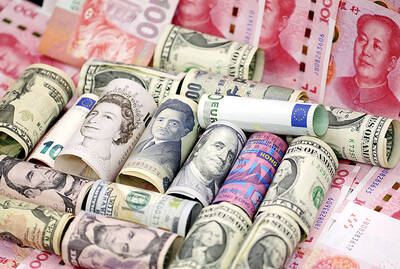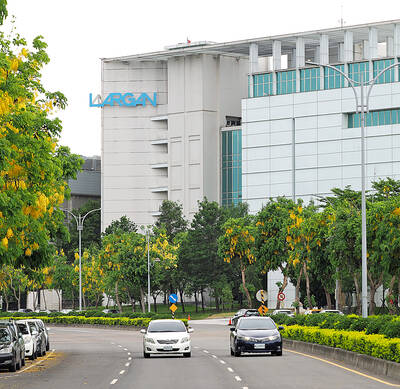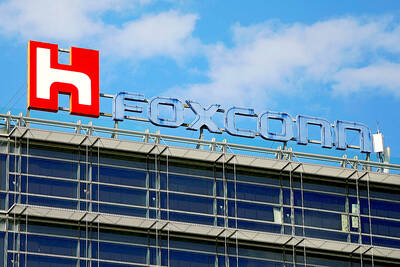China's premier beer brand, Tsingtao Beer, said yesterday that it does not contain methanol in the brewing process, refuting a Liberty Times report that many China-produced beer brands reportedly contain the cancer-causing chemical.
"Tsingtao has not added methanol to its beer for many decades," said Peter Tsai (蔡清富), deputy general manager of the company that distributes Tsingtao in Taiwan, the Taiwan Tsing Beer Corp (台灣青啤).
Tsai was responding to recent reports that Shenzhen-based Jinwei Beer Co (金威啤酒) claims to be the first Chinese brewery to not use methanol.
Methanol is a colorless, toxic, flammable liquid that can be used as an antifreeze, a general solvent, a fuel or a denaturant for ethyl alcohol. Medical studies show that continued consumption of methanol-containing alcohol is harmful to human health.
Tsai said Jinwei's claim is simply outrageous because it implies that most other Chinese beer brands use the chemical in the beer-brewing process.
Jinwei's claim has caused concern among local health authorities and consumers as China-brewed beer has enjoyed increasing popularity, where drinkers consume about 550,000 tonnes of beer a year.
Taiwan Tobacco and Liquor Corp (
"Our beer meets world standards of quality," said Morgan Hwang (黃營杉), chairman of Taiwan Tobacco. "We have never added that cancer-causing substance [meth-anol] to our product."
The Consumers' Foundation (
"If any Chinese beer is found of containing the banned substance, it should be pulled from shelves right away and the distributor of the beer should be held responsible for possible health damage," said Cheng Jen-hung (程仁宏), secretary-general of the foundation.
In response, health authorities said they will look into China's beer inspection procedures and standards. In addition, the Ministry of Finance said it will check whether Chinese beer contains any methanol.
Tsingtao Beer and rival Beijing-based Yanjing Beer entered Taiwan's market last year following termination of the nation's alcohol-production monopoly held by the state-controlled Taiwan Tobacco and Wine Board (菸酒公賣局).
Tsingtao captured nearly 8 percent of the market last year and is expected to take 12 percent market share this year, Tsia said. But it remains to be seen whether the methanol report would affect Tsingtao's sales, he added.
Currently, Taiwan Tobacco and Liquor Corp has about 74 percent of the domestic beer market with its Taiwan Beer brand. The company hopes to increase the beer's market share to 80 percent this year, Hwang told the Taipei Times in early May.
Taisan Enterprise Co (

Taiwan’s foreign exchange reserves hit a record high at the end of last month, surpassing the US$600 billion mark for the first time, the central bank said yesterday. Last month, the country’s foreign exchange reserves rose US$5.51 billion from a month earlier to reach US$602.94 billion due to an increase in returns from the central bank’s portfolio management, the movement of other foreign currencies in the portfolio against the US dollar and the bank’s efforts to smooth the volatility of the New Taiwan dollar. Department of Foreign Exchange Director-General Eugene Tsai (蔡炯民)said a rate cut cycle launched by the US Federal Reserve

Handset camera lens maker Largan Precision Co (大立光) on Sunday reported a 6.71 percent year-on-year decline in revenue for the third quarter, despite revenue last month hitting the highest level in 11 months. Third-quarter revenue was NT$17.68 billion (US$581.2 million), compared with NT$18.95 billion a year earlier, the company said in a statement. The figure was in line with Yuanta Securities Investment Consulting Co’s (元大投顧) forecast of NT$17.9 billion, but missed the market consensus estimate of NT$18.97 billion. The third-quarter revenue was a 51.44 percent increase from NT$11.67 billion in the second quarter, as the quarter is usually the peak

Nvidia Corp’s major server production partner Hon Hai Precision Industry Co (鴻海精密) reported 10.99 percent year-on-year growth in quarterly sales, signaling healthy demand for artificial intelligence (AI) infrastructure. Revenue totaled NT$2.06 trillion (US$67.72 billion) in the last quarter, in line with analysts’ projections, a company statement said. On a quarterly basis, revenue was up 14.47 percent. Hon Hai’s businesses cover four primary product segments: cloud and networking, smart consumer electronics, computing, and components and other products. Last quarter, “cloud and networking products delivered strong growth, components and other products demonstrated significant growth, while smart consumer electronics and computing products slightly declined,” compared with the

The US government on Wednesday sanctioned more than two dozen companies in China, Turkey and the United Arab Emirates, including offshoots of a US chip firm, accusing the businesses of providing illicit support to Iran’s military or proxies. The US Department of Commerce included two subsidiaries of US-based chip distributor Arrow Electronics Inc (艾睿電子) on its so-called entity list published on the federal register for facilitating purchases by Iran’s proxies of US tech. Arrow spokesman John Hourigan said that the subsidiaries have been operating in full compliance with US export control regulations and his company is discussing with the US Bureau of